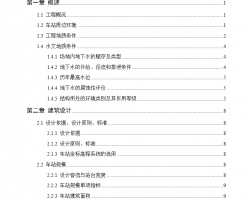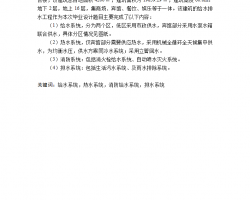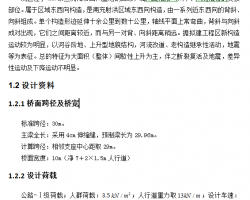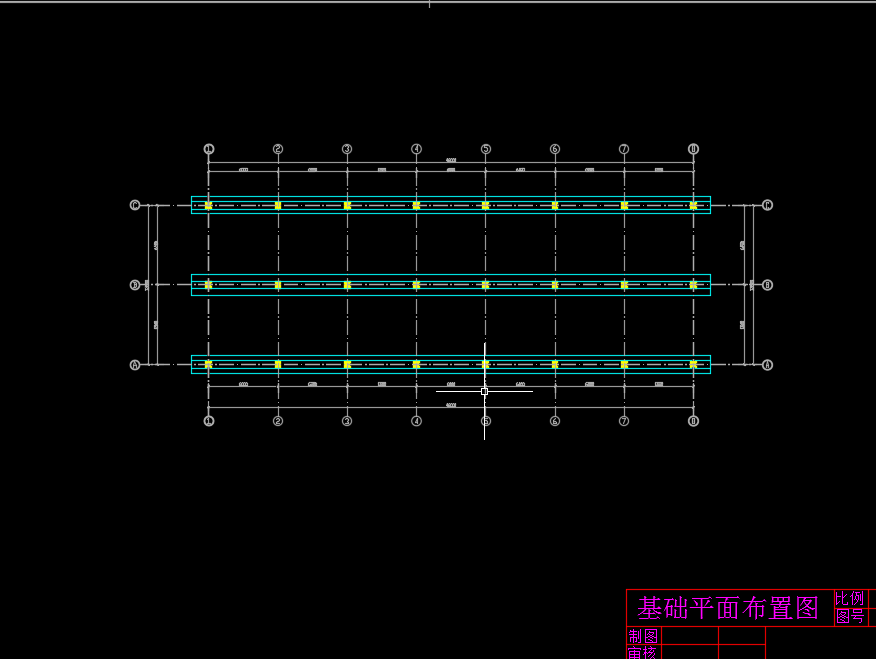摘要:地球表层的土壤沉积物记录了第四纪以来与气候、环境、人类等有关的地球演化信息, 是重要的研究过去历史的载体.成土体系中土壤的诸多特性都与成土期的气候环境信息息息相关, 通过地质学研究方法可以提取某些特性并作为反演风化强度以及古气候的风化指标, 即古气候替代指标.重点讨论了成土体系中新生的矿物学风化指标——粘土矿物与铁矿物的表征意义、研究方法与实例分析, 并评述了其在反演气候方面的优势与局限性.成土作用中新生的粘土矿物直接受成土期盛行的环境与气候条件的影响, 所以其组成、粒度、含量、结晶度等矿物学特征充分记录了成土期的气候与环境信息.另外, 成土体系中也会新生成部分铁矿物.自生的铁矿物是反映成土期的湿度条件、温度范围的有效指标, 因此对当时的气候演化历史也有很好的指示意义.粘土矿物与铁矿物在一定的条件下都可以作为独立的重建古气候的替代指标, 但是在使用时要充分考虑研究区域的地质背景、物源供给、气候类型、风化条件等客观局限对这些风化指标的制约.另外, 对于区域内风化程度及古气候的重建, 通常多指标结合对比的方法更为可靠.
关键词:成土作用; 化学风化; 粘土矿物; 铁矿物; 第四纪气候; 矿物学;
引言
硅酸盐的化学风化过程直接影响着成土作用并控制着地表的演化过程 (Gislason et al., 2009;Dixon et al., 2016) , 而长尺度的碳循环与全球气候变化也处于成土作用中的剥蚀与风化过程的潜在调控中 (Eiriksdottir et al., 2013) .因此, 评估控制成土风化过程中的因素对于更好地理解地球演化进程至关重要.复杂的成土过程受控于气候主导下的温度与降水变化, 经过漫长的地质时间积累后, 会在地表广泛堆积成土作用的最终产物———土壤 (Dixon et al., 2009) .不同区域、气候特点下的土壤具有相异的特性:不同的颜色、粒度、矿物组成等, 这些因素往往可以提取并作为反演风化强度与气候改变的替代指标 (Sheldon and Tabor, 2009) .
目前我们在地表所见的土壤堆积基本属于第四纪以来成土作用的产物, 这些土壤中提出来的指标可以反映第四纪的相关信息, 例如气候演化、季风环流、环境变迁、构造隆升、古人类繁盛等诸多第四纪以来地球表面的生命脉动过程 (Sun et al., 2015a;Wang et al., 2015) .第四纪是地球演化最新的阶段, 也是改变全球面貌最重要的阶段.冰川数度盛衰, 构造趋于活跃, 人类与文明的诞生都发生在第四纪, 对第四纪气候演化的研究对于评估未来气候走势与环境发展有着极为重要的意义, 因此, 对成土体系中风化指标的提取与研究也同样重要.
成土体系中常见的可以刻画风化强度的指标有地球化学指标、粒度指标、矿物学指标等 (Buggle et al., 2011;Stuut et al., 2014;Hong et al., 2015) .其中成土体系中新生的矿物学指标是此次研究评述的重点.本文详细阐述了成土体系中的自生矿物在表征气候中所扮演的角色, 系统总结了其在古气候重建中的研究方法、应用及意义.另外, 本文还详细探讨了自生矿物作为古气候替代指标的局限性, 并展望了光谱学分析自生矿物特征和应用于风化重建中的可能.
1 成土作用
土壤是由多种风化过程相互作用下形成的复杂的系统, 是存在于大气圈、生物圈、水圈与岩石圈连接处的多元化界面 (Dixon et al., 2009) .在此界面发生的母岩降解与土壤生成的作用称为成土作用, 成土作用发生的关键区域近年来受到更多的关注, 被称为“关键带”, 是岩石、空气、水与生命交汇的地方 (Brantley et al., 2007) .在此处, 物理、化学与生物风化相互作用, 互为影响, 形成能量源源不断的引擎将关键带的基岩不断地转换成土壤, 改造着地球表面的面貌, 此过程可以通过图1简单概括 (Anderson et al., 2004;Brantley et al., 2007;曾方明等, 2014;曾方明, 2016) .
1.1 风化条件下的成土过程
在缓慢的成土过程中, 地表母岩在不断的风化过程积累下, 组成岩石的矿物会逐渐降解, 不同的矿物风化降解的本质与速率首先是由矿物本身决定的.Goldich (1938) 在1938年就指出, 地表主要造岩矿物的风化敏感性与岩浆结晶顺序 (鲍文序列) 有直接的关系.所以橄榄石、辉石、角闪石等在岩浆冷却过程中先结晶形成的矿物在风化开始后会更易于崩解蚀变.另外, 在近几十年的研究中发现, 矿物的抗风化能力与其晶体结构与化学构成有直接的关系, 矿物晶体结构中的位错与缺陷, 以及矿物在微区化学成分上的不均一性等, 都为风化作用提供了绝佳的起始位置 (Blumet al., 1990;White and Brantley, 2003;Wilson, 2004) .
随着母岩矿物的不断降解, 成土体系内的元素组成也会随之改变 (图1) .可溶和易迁移的元素不断流失耗尽, 难溶和不易迁移的元素逐渐富集.因此, 土壤中的Na, K, Ca等离子会不断从成土体系中淋滤析出, 而较难溶的Mg, Fe, Al 等残余组分会相对富集 (Buggle et al., 2011;Jiang et al., 2016) .与此同时, 成土作用会进入矿物蚀变与新矿物生成的阶段.这个阶段内成土体系中颗粒粒度会不断减小, 并生成大量的粘土矿物、三水铝矿、铁矿物等次生矿物 (Chadwick and Chorover, 2001) , 此类新矿物的不断积累增加代表了成土作用进入了土壤生成的最终阶段.
1.2 气候条件对成土体系中矿物学的影响
风化过程作用下的成土作用受到很多因素的影响, 包括母岩、时间、地形、有机质和气候等 (Brady and Weil, 2004;Stockmann et al., 2011;图1) .其中气候变化起主要作用, 各个因素之间相互关联, 形成复杂的体系 (Jahn et al., 2001) .气候变化通过以下方面直接地影响土壤的生成: (1) 控制成土期繁盛的动植物群, 使土壤发生物理迁移与混合, 并改变土壤的酸度; (2) 通过控制土壤温度与含水量影响化学风化速率 (Dixon et al., 2009) .气候通过温度与降水影响成土过程的原理可阐述如下:首先, 温度主要通过改变风化速率来影响风化程度, 随着温度的上升, 风化程度会随之加强 (Sun et al., 2016a) .其次, 成土作用包含一系列的降解过程, 包括淋滤与淀积等迁移过程, 上述过程也可以被描述为流失/富集过程以及转变过程 (Simonson, 1959;Huggett, 1998) .淋滤-淀积过程的动力来自于降水频率与强度对岩石/土壤溶解力大小的影响, 不断增加的淋滤过程增加了硅的活性并加剧了风化程度.
图1 成土作用的影响因素、产物以及土壤形成的过程简图

据Brantley et al. (2007) 修改
在气候较为干燥寒冷, 年降水量较低的地区, 例如高纬度的极地地区, 化学与生物风化不明显, 通常以物理风化为主, 此时成土作用处于岩石崩解的最初阶段, 其产物通常为岩石碎片以及风成堆积等外来堆积物 (Lee et al., 2004) .此时的成土体系中以原岩的矿物为主, 次生矿物极少或者没有.但是在极其微弱的风化条件的不断积累下, 原始成土体系中的橄榄石、辉石、角闪石等暗色矿物部分崩解殆尽, 并产生微量新生的粘土矿物、铁矿物等, 原始岩层会出现数厘米的风化层 (Chevrier et al., 2006) .在气候适宜, 降水量增多的中纬度温带地区, 物理风化、化学风化与生物风化相互制约平衡, 成土作用进入由纯粹的物理岩石崩解到化学性的元素迁移并逐渐形成新生矿物的阶段 (Zhao et al., 2005) .成土体系中的颗粒开始变细, 暗色矿物基本瓦解消失, 矿物组成以伊利石、绿泥石等繁盛于弱化学风化条件下的粘土矿物以及石英、长石为主, 并开始出现部分磁赤铁矿等磁性矿物.而在亚热带及热带, 气候湿润炎热, 年降水量充沛的中低纬度地区, 成土作用强烈且广泛, 风化壳的厚度可以到几米至二十几米 (Liu et al., 2017;Zhao et al., 2017) .高温以及潮湿的环境极大地促进了化学风化以及生物风化的进行, 这个时候的成土体系中的颗粒不断变得更细, 长石等原岩中的矿物基本消失, 仅剩少量粒度极细的石英.粘土矿物组合由以伊利石、绿泥石为主转变为以蒙脱石及高岭石族矿物为主, 并且粘土矿物的结晶度会变差 (Sheldon and Tabor, 2009) .铁矿物组合中以磁赤铁矿为代表的磁性矿物逐渐减少, 而赤铁矿占据了更大的比重 (Liu et al., 2017;Zhao et al., 2017) .另外, 在终年炎热多雨的地区, 成土体系中会出现大量三水铝矿, 也是化学风化到达最终的产物 (Lu et al., 2015) .
2 成土体系中新生的矿物学风化指标
土壤中元素的迁移、粒度分布、新矿物的生成等与成土有关的特质在风化过程中不断改变并最终达到平衡 (Sun et al., 2016a;Zheng et al., 2016) .这些成土特质的相对改变可以用来确定其风化程度.其中最具代表性的两大类指标是离子迁移衍生的风化指标体系与自生矿物衍生的风化指标体系.与离子迁移有关的风化指标已有前人深入探讨过 (Buggle et al., 2011) , 本次综述不再评述;在接下来的篇幅中重点探讨与自生矿物有关的风化指标.土壤体系中最典型的自生矿物是粘土矿物与铁矿物.粘土矿物与铁矿物的物相组成与含量变化可作为土壤剖面的风化程度以及成土时期的气候演化历史可靠的指标.
2.1 粘土矿物
成土体系中自生的粘土矿物通常来自于母岩的风化蚀变残余或者土壤溶解物的直接沉淀, 反映了成土作用中矿物连续递进的演化过程 (Turpault et al., 2008) , 并直接受成土期盛行的环境状态与气候条件的影响 (Wilson, 2004) .因此, 粘土矿物的矿物学特征 (组成、粒度、含量、结晶度等) 充分记录了成土期的气候与环境信息 (Chamley, 1989) , 并广泛应用于湖泊、河流、海洋与陆地等各类沉积物的物源辨识与古气候重建研究中 (Guyot et al., 2007;Liu et al., 2009, 2010;Hong et al., 2016) .
2.1.1 粘土矿物对古气候信息的表征
粘土矿物对气候的反映基于粘土矿物在岩石降解与成土过程中随着气候改变而演化的总体趋势:当外部的气候条件由干燥寒冷向潮湿炎热转变, 岩石/土壤中的粘土矿物会出现伊利石→绿泥石→蛭石→蒙脱石→高岭石的总体演化趋势 (Sheldon and Tabor, 2009;Nordt and Driese, 2010) .其中伊利石与绿泥石形成于成土风化过程的最初阶段, 两者在成土体系中的大量富集代表了源区物质的快速物理侵蚀和相对干燥寒冷的环境 (Liu et al., 2010;Wang and Yang, 2013) .另外, 伊利石与绿泥石相对含量的变化与物源的变化或者原位气候的振荡改变密切相关 (Sun et al., 2015b) .总体来说, 伊利石 (I) 与绿泥石 (Ch) 形成于弱风化的气候环境, 随着温度与降水的增加, 易于向其他粘土矿物转变 (Nesbitt and Young, 1989) .蛭石 (V) 与蒙脱石 (Sm) 形成于中等程度的风化条件下 (Zhao et al., 2017) .蒙脱石一般形成于季节性干湿交替的气候下, 是伊利石、白云母或者其他碎屑成分在物源区或者沉积区中等风化程度下的原位产物.另外, 排水不畅的成土环境, 较低的地势等都利于蒙脱石的生成 (Gylesj9and Arnold, 2006;Vargaet al., 2011;U'jvári et al., 2014) .高岭石 (K) 是成土作用中原位风化的最终产物, 通常形成于湿热气候下排水顺畅的陡坡环境中, 是强烈的化学风化与淋滤作用的结果, 其大量出现代表成土期经历了温暖潮湿的气候 (Dixon and Weed, 1989;Varga et al., 2011) .单独的某种粘土矿物的含量特征或者某些粘土矿物的比值变化 (e.g., K/I, K+Sm/I, I/Ch) 以及粘土矿物与其他矿物的比值变化 (e.g., 伊利石/石英、绿泥石/石英) 都可以用来反映成土期的风化程度与气候演化特征 (Zhao, 2005;Dou et al., 2010;Zeng et al., 2014;Sun et al., 2015b) .
另外, 当粘土矿物的物源来自排水盆地或物源混杂时, 粘土矿物搬运与沉积过程中会因为差异性的絮凝或者分选作用而发生一定程度的理化性质的更改, 从而大大影响它们对气候信息的解译 (Wang and Yang, 2013) .某些晶体学指数, 例如伊利石结晶度 (IC) 、绿泥石结晶度 (ChC) 和伊利石化学指数 (CII) 等受沉积分异作用的影响较小, 可以更好地替代粘土组合含量指标来反映古气候演化.其中IC是最为广泛使用的结晶度指标 (Liu et al., 2007) .IC通常通过伊利石1nm衍射峰的半高宽 (Kübler指数) 来表征.当气候干冷时, 环境中缺乏水分, 风化作用以物理风化为主, 伊利石保存完好, IC值相对较高;相反在湿热的气候条件下, 伊利石容易受到淋滤, 易于向其他粘土矿物转变, 此时的IC值会逐渐降低 (Liu et al., 2010;季峻峰等, 2012) .CII值也可以有效反映气候信息, 并且可以用于示踪物源区和搬运路径 (Liu et al., 2008) .当CII低于0.5时, 说明其为富铁铝的伊利石, 代表了较弱化学风化的环境;CII大于0.5时说明其为富铝伊利石, 生成于强烈水解的环境中 (Chamley, 1989) .
2.1.2 中国南方红土中粘土矿物的研究例析
中国南方 (秦岭-淮河以南) 受东亚季风、印度季风等多股季风环流系统影响具有鲜明的热带季风气候特征, 在地表形成了广泛分布的红土沉积物 (席承藩, 1991;Lu et al., 2015) .南方的红土沉积物具有酸性、细粒性、强风化性、脱硅富铝性等特征, 是地质时期活跃的水-气-生等因素共同参与下的产物, 其发育过程受控于全球气候变化, 是研究第四纪气候演化的良好载体 (李长安和顾延生, 1997;Hong et al., 2016) .近十年来, 众多学者一直致力于寻找红土沉积物中有效的气候替代指标, 试图建立红土成土演化与环境气候改变之间的关系, 并为全球变化提供依据.其中出现了更多将红土中的粘土矿物应用于古气候重建的例子, 并逐渐建立起一系列长江中下游典型的红土剖面 (Yin et al., 2013;Hong et al., 2014, 2016;Lu et al., 2015;Zhao et al., 2017) .
粘土矿物的晶体形态和晶体结构分别可以使用扫描电子显微镜 (SEM) 以及透射电子显微镜 (TEM) 进行推测与分析 (Xieetal., 2013a, 2013b;李金华和潘永信, 2015;洪汉烈等, 2017) .其中粘土矿物所特有的晶格条纹像的特点可以通过TEM照片较好的呈现 (图2) .随着微观成像技术的不断发展, 粘土矿物之间的转化过程可以直观展示在高分辨率的TEM图像中, 使得粘土矿物原位分析气候转变成为可能.图2中蒙脱石与高岭石之间的转变, 蛭石与伊利石之间的转变等都为红土成土期的气候转变提供了直接的矿物学证据.第四纪以来, 尤其是更新世以来, 中国南方区域内的气候波动性明显, 在红土剖面中下部出现部分混层粘土矿物, 以及偶尔可见的粘土矿物之间的微观转化, 正是气候强烈波动、成土体系中强烈淋滤风化的直观性证据 (Hong et al., 2012, 2014, 2015;Yin et al., 2013) .
粘土矿物的物相测定与分析通常使用粉晶衍射分析 (XRD) 技术.前人在安徽宣城、江西九江、四川成都、广西百色、湖北梁子等地建立了一系列标准的红土剖面, 以剖面中的红土沉积物为载体, 对其中的粘土矿物进行提纯与分析.其获得的粘土含量变化数据与化学风化指标、粒度指标等都具有良好的对应关系, 共同印证了南方红土在更新世以来经历了比北方黄土更强烈的成土过程, 并且区域内有逐渐干燥寒冷的趋势, 与当时的季风环流、全球环境的变化相一致 (Hong et al., 2012, 2014, 2016;程峰等, 2014;赵璐璐等, 2015;Zhao et al., 2017) .
另外, 全球范围内其他中低纬度区域内的土壤沉积物以及海相沉积物中, 粘土矿物也都有相一致的气候环境指示意义, 可以作为辅助的指示环境与气候的指标, 在指示古纬度、古海拔、古降水、洋流改变、动植物演化迁移过程中都有重要的应用 (de Menocal, 2004;Liu et al., 2008;Sheldon and Tabor, 2009;Shen et al., 2011;Fang et al., 2017) .印度西南边缘陆相岩心中粘土矿物的物相组合以及含量变化揭示了末次冰川时期以来相对微弱的夏季风作用, 并且在28ka与22ka有两次不连续的气候变湿润的事件出现.另外, 在15ka左右, 粘土矿物的沉淀增加与物源输入都有明显的提升, 证明在冰消期早期印度西南区域内有显着的气候回暖的过程 (Thamban et al., 2002) .美国加利福尼亚州南部圣巴巴拉盆地内的粘土矿物组合受控于第四纪晚期160ka的气候环境, 更是与古降水的演化历史密切相关.盆地内蒙脱石与其他粘土矿物的比值 (S/I与K/S) 被用作区域内古降水变化的替代指标.当S/I较高或者K/S较低, 即蒙脱石含量较高的时期反映了区域内强降水的阶段, 这些阶段与圣巴巴拉区域内植被的繁盛期有很好的对应.另外, 由粘土矿物组合反映的强降水的阶段与氧同位素的变化一致, 其中主要的强降水阶段开始于冰期并持续至间冰期, 降水量的增加反映了周围区域内气候的变暖, 也反映了同时期美国西南部周围洋流中上升流的持续变弱过程 (Robert, 2004) .爱琴海中部钻孔中高精度的高岭石与绿泥石组合变化可以重建北非沙漠中风成细粒物质的汇集进度, 而这种物源输入与湖泊的干旱消亡过程息息相关.因此, K/Ch比值的变化可以作为物源区风力活性、干旱化程度与植被覆盖面积的有效指示指标, 反映出105ka以来北非地区气候环境的演化变迁史.末次冰期以来持续走低的K/Ch比值说明, 北非物源区的湖泊沉积物持续减少, 反映出末次冰期以来湖泊减少, 环境持续干旱的演化历史 (Ehrmann et al., 2013) .
图2 中国南方红土沉积物中粘土矿物的TEM照片

K.高岭石;S.蒙脱石;V.蛭石;I.伊利石;HIV.羟基间层蛭石.a.高岭石与蒙脱石的间层 (Hong et al., 2012) ;b.蛭石与伊利石的间层 (Hong et al., 2014) ;c.伊利石与蒙脱石、高岭石的相互间层 (Hong et al., 2015) ;d.伊利石与羟基间层蛭石/蛭石的相互间层 (Yin et al., 2013)
2.2 铁矿物
成土体系中新生成的铁矿物是反映成土期的湿度条件、温度范围的有效指标, 因此对当时的气候演化历史也有很好的指示意义 (Schwertmann, 1993;Balsamet al., 2004;Inda et al., 2013) .成土作用中新生成的铁矿物通常粒度极小, 结晶度差, 含量很低, 传统分析测试手段 (e.g., XRD, SEM) 的分辨率经常达不到实验要求 (Ji et al., 2001;Ji, 2004;Zhao et al., 2017) .学者们都致力于寻找适宜的分析土壤中铁矿物的测试技术.根据成土体系中的铁矿物的磁性强弱又可以将铁矿物分为磁性铁矿物 (磁铁矿、磁赤铁矿等) 与非/弱磁性铁矿物 (赤铁矿、针铁矿等) .
2.2.1 磁铁矿与磁赤铁矿
成土体系中的磁性矿物一般通过间接的方法分析, 比如分析磁性参数 (磁化率等) 、穆斯堡尔谱测试、化学抽取法等 (Chen et al., 2005;Liu et al., 2007;Hu et al., 2013;Long et al., 2016) .其中前人研究表明中国北方黄土-古土壤序列的低频磁化率 (χlf) 变化与深海氧同位素波动有明显的正相关关系, 证明磁化率可以帮助反演大陆古气候特征, 并与东亚季风环流的演化有很好的对应性 (Kukla et al., 1988;Deng et al., 2004) .磁化率的增加主要来自于成土体系中磁铁矿与磁赤铁矿的贡献 (Torrent et al., 2007) .
2.2.2 黄土高原中磁化率的研究例析
中国北方的黄土-古土壤序列 (CLP) 被认为是大陆上第四纪以来最为完整详尽的古气候环境演化的记录 (Liu and Ding, 1993;Liu et al., 1999;Clemens, 2015) .这些堆积序列由黄土与古土壤交叠构成, 其中黄土与古土壤分别是风成堆积与成土风化的产物 (曾方明等, 2014) .黄土-古土壤中磁化率的研究将中国的黄土高原推向世界的面前, 使黄土-古土壤成为继深海氧同位素、极地冰芯后又一个完整连续的研究古气候演化历史的载体 (Kukla et al., 1988;Liu et al., 1999;An et al., 2001) .黄土-古土壤序列中黄土层中的磁化率偏低, 证明黄土形成期经历了干燥寒冷的气候, 在弱风化条件下来自西北的沙土持续加积;古土壤中的磁化率明显增加, 证明了古土壤生成于温暖湿润的气候条件, 风化成土作用强烈.此外, 黄土-古土壤序列中的磁化率与氧同位素以及同体系内多种成土特性都有极好的对应性.西风、蓟县、洛川等典型的黄土高原剖面中的黄土-古土壤序列的磁化率变化与Sr/Sr、Rb/Sr以及全球氧同位素的比值都有很好的对应性, 反映出古土壤层形成期的气候偏暖湿, 磁化率偏高, 而黄土层形成期的气候偏冷干, 磁化率偏低 (图3) .另外, 在世界其他范围的中纬度的陆相沉积物中, 磁化率与其他风化指标都表现出了极高的对应性, 说明其在一定的条件下可以作为普适性的风化指标 (Liu et al., 2007;Zhao et al., 2013;Ho2ek et al., 2015) .
2.2.3 洞穴石笋记录土壤磁性矿物的研究例析
洞穴沉积物 (石笋等) 是保存重建过去气候历史的良好载体, 因为它们记录的信息精度较高, 并且通常情况下是稳定连续的 (Zhu et al., 2017) .成土体系中的部分磁性矿物会随地下水转移至洞穴系统中, 并随着石笋等洞穴堆积物的生长不断与之合成一体.石笋会即刻锁住磁性, 不被后沉积作用所影响, 并提供稳定可控的年龄数据, 是极佳的记录古地磁的载体.而随着高精度高分辨率磁力仪的研制, 使得石笋中低浓度的磁性矿物可以被精确测得 (Osete et al., 2012;Zhu et al., 2012) .近年来, 对石笋等洞穴沉积物中共生的磁性矿物的研究在古地磁记录方面取得了显着的成果, 另外, 这些磁性记录以及磁性矿物的矿物学特征都有诸多重建古气候与古环境的潜能 (Fairchild et al., 2006;Lascu and Feinberg, 2011) .
图3 中国北方典型黄土-古土壤剖面的低频磁化率变化与其他风化指标的对比曲线

a.西风剖面磁化率变化曲线 (Chen et al., 2014) ;b.蓟县剖面磁化率变化曲线 (Jahn et al., 2001) ;c.洛川剖面磁化率变化曲线 (Guan et al., 2016) ;d.洛川剖面87Sr/86Sr比值变化 (Yang et al., 2000) ;e.洛川剖面Rb/Sr比值变化 (Chen et al., 1999) ;f.同时期全球冰芯氧同位素变化 (Railsback et al., 2015)
将石笋中的磁性矿物应用于东亚季风区的古降水重建研究就是一个成功的例子 (Zhu et al., 2017) .前人研究表明长尺度的降水变化就可以记录在石笋等洞穴堆积物的磁性矿物中 (Xie et al., 2013;Bourne et al., 2015) .降水量的增加会使成土体系中的磁铁矿增加, 促进土壤内的磁铁矿通过滴水转移至洞穴内.因此, 洞穴石笋中不连续的磁铁矿及其他土壤衍生的微粒浓度的升高与间歇性的强降雨有密切的联系 (Bourne et al., 2015;Zhu et al., 2017) .石笋中阶段性成土磁铁矿的增加记录了与全新世厄尔尼诺现象相关的洪水的出现, 并且其变化周期与厄尔尼诺500年的循环相一致.
2.2.4 赤铁矿与针铁矿
赤铁矿 (Hm) 与针铁矿 (Gt) 是成土体系中常见的铁矿物, 会随着气候环境的改变而变化, 因此其组成与含量可以作为成土风化强度的指标 (Jordanova et al., 2010;Buggle et al., 2014) .温暖的、年降水量充沛且季节性干旱的气候利于土壤中赤铁矿的形成.其中雨季间隔时成土体系中形成水铁矿, 随后的旱季间隔时会使水铁矿转换成赤铁矿 (Cornell and Schwertmann, 2003;Balsamet al., 2004) .相反, 针铁矿会直接形成于土壤溶液的沉淀, 持续的相对干燥凉爽的环境利于其形成 (Chen et al., 2010) .独立的赤铁矿和/或针铁矿的含量变化, 或者赤铁矿与针铁矿的比值 (i.e.Hm/Gt, Hm/ (Hm+Gt) ) 都可以用作季风气候演化的指标 (Torrent et al., 2007;Long et al., 2011;Clift et al., 2014) .
近年来, 漫反射光谱学技术 (DRS) 的普及与应用使赤铁矿与针铁矿快速、精准, 原位的测定分析成为可能, 因此出现了诸多尝试将赤铁矿与针铁矿应用于古气候重建中的例子, 并取得了显着的成果 (Zhang et al., 2009;Buggle et al., 2014;Clift et al., 2014) .
2.2.5 东亚季风气候区内赤铁矿与针铁矿
东亚地区第四纪以来一直受东亚季风、印度季风、南亚季风等多股季风环流的影响, 形成特色鲜明的季风气候 (An, 2000;Guo et al., 2000;Anet al., 2001) .由于赤铁矿与针铁矿的形成与演化与季风息息相关, 所以近十几年来出现了更多使用赤铁矿与针铁矿研究东亚区域内气候与季风强度演化的研究, 取得了较为突出的成果 (Balsamet al., 2004;Torrent et al., 2007;Long et al., 2011;Buggle et al., 2014) .研究发现, 在中国北方的黄土-古土壤序列中, 赤铁矿与针铁矿通常与成土体系中的磁性参数有很好的对应性, 对研究土壤磁性的增长模式, 东亚夏季风强弱的变化等都有一定的辅助意义 (Ji et al., 2001;Hu et al., 2013) ;在中国南海海相沉积物中, 赤铁矿与针铁矿作为古气候与夏季风的指标成功应用于大陆风化历史的指示中, 并与地球化学、同位素等指标有很好的对应性 (Clift et al., 2014;Yang et al., 2016) .
另外, 值得一提的是, 赤铁矿和针铁矿是土壤的主要致色因子, 赤铁矿使土壤显红色, 而针铁矿使土壤显黄色 (Torrent et al., 1983;Zhang et al., 2009) .中国南方广布红土沉积, 而北方则堆积了巨厚的黄土-古土壤序列, 可推测红土中含有相比黄土更多的赤铁矿, 这从另一方面论证了中国南方在第四纪以来经历了比北方更温暖潮湿的季风性气候 (Zhao et al., 2017) .
3 局限与展望
3.1 不同区域内粘土矿物的古气候表征
粘土矿物对当地气候演化的反映主要受物源输入、成土作用等因素的影响, 当风化条件下的成土作用影响大于物源输入时, 粘土矿物的组成可以一定程度上重建当地的气候演化.例如在风化程度强烈 (CIA≥80;Hong et al., 2010;Lu et al., 2015) 的中国南方红土中, 成土作用对体系内粘土矿物组合的影响大于物源输入的影响, 所以在此区域内粘土矿物是优良的古风化与古气候替代指标 (Wang and Yang, 2013) .在风化程度中等 (60≤CIA<80;Jahn et al., 2001) 的黄土-古土壤序列中, 来自西北源源不断的巨厚物源输入一定程度上降低了成土作用对体系中粘土矿物组合的影响, 因此在风化程度偏低的黄土层中, 伊利石含量偏低, 而高岭石含量偏高;而在风化程度偏高的古土壤层中粘土含量结果恰恰相反 (Gylesj9and Arnold, 2006) .这与粘土矿物生成与演化本身所代表的气候含义截然相反.这是因为在中等程度风化的成土体系中, 将粘土矿物作为古气候指标时, 需要充分考虑到物源对粘土矿物组合的影响, 否则得到的结果是不可靠的.另外, 在中国南海的海相沉积物中, 粘土矿物对季风气候的指示主要通过物源供给与当代的洋流运输来实现, 洋流运输在决定粘土矿物组合上起到了举足轻重的作用 (Liu et al., 2007, 2010;Dou et al., 2010, 2014;Yu et al., 2016) ;中国黄河与长江的河流沉积物中主导的粘土矿物有鲜明的差别, 其中长江盆地含有较多高岭石, 反映了较强烈的化学风化过程, 黄河盆地含有较多蒙脱石, 与较强的物理风化作用有关.这种粘土组合的分布除了与气候密切相关外, 还与河流盆地内构造有关 (Yang et al., 2004;Wang and Yang, 2013) .在澳大利亚境内河流相沉积物中, 粘土矿物的组合与河流运输、储存的关联性更密切, 而与第四纪气候的快速演化无明显相关性 (Gingele and de Deckker, 2004;Gingele et al., 2007) .以上两个例子也说明河海沉积物中水体的运输力以及构造因素对粘土矿物组合也有巨大的影响.
以上实例充分说明, 粘土矿物在表征古气候与古风化信息时有一定的地域性与局限性, 在考虑使用粘土矿物组合作为古气候替代指标之前, 需要充分考虑当地的区域地质背景、风化强烈程度、物源输入等因素的影响, 并将结果与其他指标相对比以确保其可靠性.
3.2 不同气候特征下铁矿物的古气候表征
3.2.1 风化程度决定磁化率的适用性
磁化率对过去气候变化的表征有诸多客观条件的制约, 这一属性在世界各地的成土体系中都有表现.例如, 在中纬度中等风化的黄土-古土壤序列中, 例如中国黄土高原、中东地区、欧洲中部等地, 成土体系中的磁化率与风化强烈的强度有一定的正相关关系 (Maher, 1998;Ho2ek et al., 2015) .而在高纬度弱风化的西伯利亚、阿拉斯加等地, 以及中低纬度风化强烈的中国南方、南亚、阿根廷等地, 成土体系中的磁化率与其他指标并无太多相关性 (Maher, 1998;Hu et al., 2009) .这种差异性可以通过以下假说来阐明:与磁化率相关的磁赤铁矿是水铁矿氧化转变为赤铁矿的中间产物, 在较强的氧化环境下不稳定, 极易转变为赤铁矿, 此转化过程可以简单表述为水铁矿→磁赤铁矿→赤铁矿 (Cornell and Schwertmann, 2003;Torrent et al., 2007) .所以在极弱风化条件下, 成土体系中的磁化率可能大部分来自于原岩的磁性矿物, 来自成土作用新生的极少;而在强烈的风化过程中, 成土体系中的磁赤铁矿大量地转变为赤铁矿, 所以磁化率也就失去了表征古气候的意义.因此, 中纬度风化程度中等的土壤中, 磁化率的增加大部分来自于成土作用及风化强度的增加, 此时的磁化率是良好的古气候替代指标.
另外, 近年来, 学者们倾向于将土壤的磁化率 (χ) 、非滞剩磁特性 (ARM) 、等温剩磁特性 (IRM) 等磁性特征结合研究, 探讨了成土体系中各种铁矿物的转换阈值与过程, 以期得到成土作用下磁性增强的模式规律, 并取得了越来越多的成果 (Deng et al., 2004;Torrent et al., 2007;Hu et al., 2015;Rupp et al., 2016) .
3.2.2 气候类型决定赤铁矿与针铁矿的适用性
由于大量地形成赤铁矿的最佳条件是干湿交替的气候与较为丰富的年降水量, 因此温暖潮湿的季风气候下赤铁矿与针铁矿是适用性上佳的气候指标.第四纪以来, 在夏季, 东亚季风、印度季风、南亚季风等多股夏季风为亚洲东部带来热量与丰沛的降水;到了冬季, 又主要受到东亚冬季风与亚洲西风所带来的强烈的干冷空气的影响 (An, 2000;Guo et al., 2000;An et al., 2001) .因此亚洲东部形成了利于赤铁矿与针铁矿共同生成的环境.例如中国的北方与南方的土壤沉积物 (Ji et al., 2001;Balsamet al., 2004;Zhang et al., 2009) 、中国南海的海相沉积物中 (Clift et al., 2014) , 赤铁矿与针铁矿作为辅助重建同时期第四纪气候的演化与反映不同季风系统的此消彼长的指标得到了很好的应用.然而, 当气候类型中没有旱季间隔时, 比如终年潮湿多雨的雨林气候, 赤铁矿与针铁矿的组成与含量就无法反演当地的古气候变化 (Harris and Mix, 1999;Abrajevitch et al., 2009;Zhao et al., 2017) .因此, 在干湿交替的季风性气候类型下, 赤铁矿与针铁矿可以作为独立的、可靠的古气候重建指标.
3.3 新型风化指标的寻找与展望
在当今的地质学研究中, 对某区域内过去气候历史与环境变迁史的解译通常需要多指标对比验证的方法 (Clift et al., 2014;Sun et al., 2015a;Zhao et al., 2017) .随着近年来地质学各领域内越来越先进的测试仪器的出现, 学者们一般通过两种手段来加深原有的研究, 一是不断提高风化指标的精度, 增加研究区的数据量 (Chen et al., 2014;Sun et al., 2016b;Yu et al., 2016) ;二是积极寻找新的地质学方法, 创建新型的风化指标 (Balsamet al., 2004;Buggle et al., 2011;Cudahy et al., 2016) .下文内容以光谱学为例, 展望了其作为新型风化指标的可能.
近年来, 光谱学在研究土壤的各种性能方面得到了越来越多的关注.光谱学是一种快速、无损、无需繁琐样品前期处理并且性价比极高的技术手段, 广泛应用于土壤pH、湿度、活性、离子转换能力、有机碳、碳酸盐、总氮量等的分析检测 (Soriano-Disla et al., 2013;Nocita et al., 2014) .风化成土过程中典型的产物 (粘土矿物与铁矿物) 的特征峰位于可见光至短波红外光谱范围 (VSWIR;350~2 500nm;图4) .其中土壤中自生铁矿物 (赤铁矿与针铁矿) 的最重要的特征峰位于可见光至短波红外区域 (图4a;350~1 000nm;VNIR) , 粘土矿物最重要的特征峰位于短波红外区域 (图4b;1 000~2 500nm;SWIR) (da Cruz et al., 2015;Zheng et al., 2016) .随着风化程度的不同, 土壤体系中自生矿物的含量不断变化, VSWIR图谱特征峰的几何学参数 (峰位、峰强、峰宽、半高宽、对称性等) 都会随之改变.以针铁矿与伊利石为例:针铁矿在~500 nm, ~700 nm与~900nm左右都有典型的特征峰, 当风化程度降低, 气候变冷时, 位于~900nm的峰位会右移, 位于~700nm的峰强会增大 (图4a;Murphy et al., 2013, 2014) ;伊利石在~1 400nm, ~1 900nm与~2 200nm存在显着的特征峰, 当气候由暖湿向干冷转变时, 位于~1 400nm与~2 200nm峰的对称性增大, ~2 200nm峰的峰位左移, 峰强变弱 (图4b;da Cruz et al., 2015) .更重要的是, VSWIR范围内粘土矿物与铁矿物的特征峰值、峰位等几何学特征所反映的信息与XRD分析所得的结果相一致 (Cudahy et al., 2016;Leask and Ehlmann, 2016) .这种一致性使得VSWIR光谱学特征对古风化以及古气候过程信息的反演成为可能.
图4 部分常见粘土矿物与铁矿物在VSWIR光谱区域内的特征峰

4 结论
地球表层的土壤是在物理、生物、化学风化过程综合作用下形成的产物, 记录了第四纪以来与气候、环境、人类等有关的地球演化信息, 是重要的研究全球变化的载体.风化过程下的成土作用一般经历了原始母岩矿物的分解、体系内离子的迁移以及新矿物的形成等一系列的进程.成土体系中元素的迁移、粒度分布、新矿物的生成等与成土有关的特质可以用来确定其风化程度, 进而反映成土期的气候变化.其中, 成土体系中自生的粘土矿物与铁矿物等自生矿物的矿物学信息可以提取并作为可靠的反演第四纪古气候的风化指标.
成土作用中新生成的粘土矿物直接受成土期盛行的环境状态与气候条件的影响, 所以其组成、粒度、含量、结晶度等矿物学特征充分记录了成土期的气候与环境信息.其中伊利石、绿泥石、蛭石、蒙脱石、高岭石等土壤中常见的粘土矿物具有极其鲜明的气候反演意义, 单独的某种粘土矿物的含量特征或者某些粘土矿物的比值变化都可以用来反映成土期的风化程度与气候演化特征.另外, 随着微观分析技术的不断进步, 粘土矿物的微观转换特征更是为成土期的气候转变提供了直接的证据.
除了粘土矿物, 成土体系中也会新生成部分磁铁矿、磁赤铁矿等磁性铁矿物与赤铁矿、针铁矿等非/弱磁性铁矿物.自生的铁矿物是反映成土期的湿度条件、温度范围的有效指标, 因此对当时的气候演化历史也与很好的指示意义.磁铁矿与磁赤铁矿的含量与磁化率息息相关, 黄土-古土壤序列中的磁化率与深海氧同位素波动有明显的正相关关系, 证明磁化率可以帮助反演大陆古气候特征.另一方面, 赤铁矿与针铁矿在成土体系中的此消彼长与季风性的气候变化相对应, 独立的赤铁矿和/或针铁矿的含量变化, 或者赤铁矿与针铁矿的比值都可以用作季风气候演化的指标.
成土体系中新生的粘土矿物与铁矿物的矿物学特征在一定条件下都可以作为独立的反映气候信息的良好指标.但是在真正将其应用在某研究区域中时, 还要充分考虑当地的地质背景、物源供给、气候类型、成土条件等因素的制约.在将某古气候指标应用于实际研究中时, 要注意结合主量元素、微量元素、粒度分布、同位素等指标共同印证, 使得得到的结论清晰可靠.另外, 在今后的研究中, 应该积极探寻光谱学等新的风化指标, 在多指标的共同重建下力求对区域内的古气候历史完整、精准的表达.
参考文献
[]Abrajevitch, A., van der Voo, R.V.D., Rea, D.K., 2009.Variations in Relative Abundances of Goethite and Hematite in Bengal Fan Sediments:Climatic vs.Diagenetic Signals.Marine Geology, 267 (3-4) :191-206.https://doi.org/10.1016/j.margeo.2009.10.010
[]An, Z., Kutzbach, J.E., Prell, W.L., et al., 2001.Evolution of Asian Monsoons and Phased Uplift of the HimalayaTibetan Plateau since Late Miocene Times.Nature, 411 (6833) :62-66.
[]An, Z.S., 2000.The History and Variability of the East Asian Paleomonsoon Climate.Quaternary Science Reviews, 19 (1-5) :171-187.https://doi.org/10.1016/s0277-3791 (99) 00060-8
[]Anderson, S.P., Blum, J., Brantley, S.L., et al., 2004.Proposed Initiative Would Study Earth's Weathering Engine.EOS, Transactions American Geophysical Union, 85 (28) :265.https://doi.org/10.1029/2004eo280001
[]Balsam, W., Ji, J.F., Chen, J., 2004.Climatic Interpretation of the Luochuan and Lingtai Loess Sections, China, Based on Changing Iron Oxide Mineralogy and Magnetic Susceptibility.Earth and Planetary Science Letters, 223 (3-4) :335-348.https://doi.org/10.1016/j.epsl.2004.04.023
[]Blum, A.E., Yund, R.A., Lasaga, A.C., 1990.The Effect of Dislocation Density on the Dissolution Rate of Quartz.Geochimica et Cosmochimica Acta, 54 (2) :283-297.https://doi.org/10.1016/0016-7037 (90) 90318-f
[]Bourne, M.D., Feinberg, J.M., Strauss, B.E., et al., 2015.Long-Term Changes in Precipitation Recorded by Magnetic Minerals in Speleothems.Geology, 43 (7) :595-598.https://doi.org/10.1130/g36695.1
[]Brady, N.C., Weil, R.R., 2004.Elements of the Nature and Properties of Soils.Upper Saddle River, New Jersey, Prentice-Hall, 960.
[]Brantley, S.L., Goldhaber, M.B., Ragnarsdottir, K.V., 2007.Crossing Disciplines and Scales to Understand the Critical Zone.Elements, 3 (5) :307-314.https://doi.org/10.2113/gselements.3.5.307
[]Buggle, B., Glaser, B., Hambach, U., et al., 2011.An Evaluation of Geochemical Weathering Indices in LoessPaleosol Studies.Quaternary International, 240 (1-2) :12-21.https://doi.org/10.1016/j.quaint.2010.07.019
[]Buggle, B., Hambach, U., Müller, K., et al., 2014.Iron Mineralogical Proxies and Quaternary Climate Change in SE-European Loess-Paleosol Sequences.Catena, 117:4-22.https://doi.org/10.1016/j.catena.2013.06.012
[]Chadwick, O.A., Chorover, J., 2001.The Chemistry of Pedogenic Thresholds.Geoderma, 100 (3-4) :321-353.https://doi.org/10.1016/s0016-7061 (01) 00027-1
[]Chamley, H., 1989, Clay Sedimentology.Springer, Berlin, 623.
[]Chen, J., An, Z.S., Head, J., 1999.Variation of Rb/Sr Ratios in the Loess-Paleosol Sequences of Central China during the Last 130 000 Years and Their Implications for Monsoon Paleoclimatology.Quaternary Research, 51 (3) :215-219.https://doi.org/10.1006/qres.1999.2038
[]Chen, J.S., Liu, X.M., Kravchinsky, V.A., 2014.Response of the High-Resolution Chinese Loess Grain Size Record to the50°N Integrated Winter Insolation during the Last 500 000Years.Geophysical Research Letters, 41 (17) :6244-6251.https://doi.org/10.1002/2014gl060239
[]Chen, T., Xu, H., Xie, Q., et al., 2005.Characteristics and Genesis of Maghemite in Chinese Loess and Paleosols:Mechanism for Magnetic Susceptibility Enhancement in Paleosols.Earth and Planetary Science Letters, 240 (3-4) :790-802.https://doi.org/10.1016/j.epsl.2005.09.026
[]Chen, T.H., Xie, Q.Q., Xu, H.F., et al., 2010.Characteristics and Formation Mechanism of Pedogenic Hematite in Quaternary Chinese Loess and Paleosols.Catena, 81 (3) :217-225.https://doi.org/10.1016/j.catena.2010.04.001
[]Cheng, F., Hong, H.L., Gu, Y.S., et al., 2014.Clay Mineralogy and Its Paleoclimate Interpretation of the Pleistocene Sediments in Baise Basin, Southern China.Quaternary Sciences, 34 (3) :560-569 (in Chinese with English abstract) .
[]Chevrier, V., Mathé, P.E., Rochette, P., et al., 2006.Magnetic Study of an Antarctic Weathering Profile on Basalt:Implications for Recent Weathering on Mars.Earth and Planetary Science Letters, 244 (3-4) :501-514.https://doi.org/10.1016/j.epsl.2006.02.033
[]Clark, R.N., Swayze, G.A., Wise, R., et al., 2007.USGS Digital Spectral Library Splib06a.US Geological Survey, Digital Data Series, 231.
[]Clemens, S.C., 2015.Late Cenozoic Climate Change in Asia:Loess, Monsoon and Monsoon-Arid Environment E-volution.Quaternary Science Reviews, 107:274-275.https://doi.org/10.1016/j.quascirev.2014.10.026
[]Clift, P.D., Wan, S.M., Blusztajn, J., 2014.Reconstructing Chemical Weathering, Physical Erosion and Monsoon Intensity since 25Ma in the Northern South China Sea:A Review of Competing Proxies.Earth-Science Reviews, 130:86-102.https://doi.org/10.1016/j.earscirev.2014.01.002
[]Cornell, R.M., Schwertmann, U., 2003, The Iron Oxides:Structure, Properties, Reactions, Occurrences and Uses.Wiley VCH, Weinheim
[]Cudahy, T., Caccetta, M., Thomas, M., et al., 2016.SatelliteDerived Mineral Mapping and Monitoring of Weathering, Deposition and Erosion.Scientific Reports, 6 (1) :1-12.https://doi.org/10.1038/srep23702
[]da Cruz, R.S.D., Fernandes, C.M.D., Villas, R.N.N., et al., 2015.A Study of the Hydrothermal Alteration in Paleoproterozoic Volcanic Centers, S2o Félix do Xingu Region, Amazonian Craton, Brazil, Using Short-Wave Infrared Spectroscopy.Journal of Volcanology and Geothermal Research, 304:324-335.https://doi.org/10.1016/j.jvolgeores.2015.09.005
[]de Menocal, P.B., 2004.African Climate Change and Faunal Evolution during the Pliocene-Pleistocene.Earth and Planetary Science Letters, 220 (1-2) :3-24.https://doi.org/10.1016/s0012-821x (04) 00003-2
[]Deng, C.L., Zhu, R.X., Verosub, K.L., et al., 2004.Mineral Magnetic Properties of Loess/Paleosol Couplets of the Central Loess Plateau of China over the Last 1.2 Myr.Journal of Geophysical Research:Solid Earth, 109 (B1) :241-262.https://doi.org/10.1029/2003jb002532
[]Dixon, J.L., Chadwick, O.A., Vitousek, P.M., 2016.ClimateDriven Thresholds for Chemical Weathering in Postglacial Soils of New Zealand.Journal of Geophysical Research:Earth Surface, 121 (9) :1619-1634.https://doi.org/10.1002/2016jf003864
[]Dixon, J.L., Heimsath, A.M., Kaste, J., et al., 2009.ClimateDriven Processes of Hillslope Weathering.Geology, 37 (11) :975-978.https://doi.org/10.1130/g30045a.1
[]Dixon, J.B., Weed, S.B., 1989.Minerals in Soil Environments (2nd ed.) .Soil Science Society of America, Madison, WI.
[]Dou, Y., Li, J., Zhao, J., et al., 2014.Clay Mineral Distributions in Surface Sediments of the Liaodong Bay, Bohai Sea and Surrounding River Sediments:Sources and Transport Patterns.Continental Shelf Research, 73:72-82.https://doi.org/10.1016/j.csr.2013.11.023
[]Dou, Y., Yang, S., Liu, Z., et al., 2010.Clay Mineral Evolution in the Central Okinawa trough since 28ka:Implications for Sediment Provenance and Paleoenvironmental Change.Palaeogeography, Palaeoclimatology, Palaeoecology, 288 (1-4) :108-117.https://doi.org/10.1016/j.palaeo.2010.01.040
[]Ehrmann, W., Seidel, M., Schmiedl, G., 2013.Dynamics of Late Quaternary North African Humid Periods Documented in the Clay Mineral Record of Central Aegean Sea Sediments.Global and Planetary Change, 107:186-195.https://doi.org/10.1016/j.gloplacha.2013.05.010
[]Eiriksdottir, E.S., Gislason, S.R., Oelkers, E.H., 2013.Does Temperature or Runoff Control the Feedback between Chemical Denudation and Climate?Insights from NEIceland.Geochimica et Cosmochimica Acta, 107:65-81.https://doi.org/10.1016/j.gca.2012.12.034
[]Fairchild, I.J., Smith, C.L., Baker, A., et al., 2006.Modification and Preservation of Environmental Signals in Speleothems.Earth-Science Reviews, 75 (1-4) :105-153.https://doi.org/10.1016/j.earscirev.2005.08.003
[]Fang, Q., Hong, H.L., Chen, Z.Q., et al., 2017.Microbial Proliferation Coinciding with Volcanism during the Permian-Triassic Transition:New, Direct Evidence from Volcanic Ashes, South China.Palaeogeography, Palaeoclimatology, Palaeoecology, 474:164-186.https://doi.org/10.1016/j.palaeo.2016.06.026
[]Gingele, F.X., de Deckker, P., 2004.Fingerprinting Australia's Rivers with Clay Minerals and the Application for the Marine Record of Climate Change.Australian Journal of Earth Sciences, 51 (3) :339-348.https://doi.org/10.1111/j.1400-0952.2004.01061.x
[]Gingele, F., de Deckker, P., Norman, M., 2007.Late Pleistocene and Holocene Climate of SE Australia Reconstructed from Dust and River Loads Deposited Offshore the River Murray Mouth.Earth and Planetary Science Letters, 255 (3-4) :257-272.https://doi.org/10.1016/j.epsl.2006.12.019
[]Gislason, S.R., Oelkers, E.H., Eiriksdottir, E.S., et al., 2009.Direct Evidence of the Feedback between Climate and Weathering.Earth and Planetary Science Letters, 277 (1-2) :213-222.https://doi.org/10.1016/j.epsl.2008.10.018
[]Goldich, S.S., 1938.A Study in Rock-Weathering.The Journal of Geology, 46 (1) :17-58.https://doi.org/10.1086/624619
[]Guan, H., Zhu, C., Zhu, T., et al., 2016.Grain Size, Magnetic Susceptibility and Geochemical Characteristics of the Loess in the Chaohu Lake Basin:Implications for the Origin, Palaeoclimatic Change and Provenance.Journal of Asian Earth Sciences, 117:170-183.https://doi.org/10.1016/j.jseaes.2015.12.013
[]Guo, Z., Biscaye, P., Wei, L., et al., 2000.Summer Monsoon Variations over the Last 1.2Ma from the Weathering of Loess-Soil Sequences in China.Geophysical Research Letters, 27 (12) :1751-1754.https://doi.org/10.1029/1999gl008419
[]Guyot, J.L., Jouanneau, J.M., Soares, L., et al., 2007.Clay Mineral Composition of River Sediments in the Amazon Basin.Catena, 71 (2) :340-356.https://doi.org/10.1016/j.catena.2007.02.002
[]Gylesj9, S., Arnold, E., 2006.Clay Mineralogy of a Red Clay-Loess Sequence from Lingtai, the Chinese Loess Plateau.Global and Planetary Change, 51 (3-4) :181-194.https://doi.org/10.1016/j.gloplacha.2006.03.002
[]Hamann, Y., Ehrmann, W., Schmiedl, G., et al., 2009.Modern and Late Quaternary Clay Mineral Distribution in the Area of the SE Mediterranean Sea.Quaternary Research, 71 (3) :453-464.https://doi.org/10.1016/j.yqres.2009.01.001
[]Harper, R.J., Gilkes, R.J., 2004.Aeolian Influences on the Soils and Landforms of the Southern Yilgarn Craton of Semi-Arid, Southwestern Australia.Geomorphology, 59 (1-4) :215-235.https://doi.org/10.1016/j.geomorph.2003.07.018
[]Harris, S.E., Mix, A.C., 1999.Pleistocene Precipitation Balance in the Amazon Basin Recorded in Deep Sea Sediments.Quaternary Research, 51 (1) :14-26.https://doi.org/10.1006/qres.1998.2008
[]Hong, H.L., Fang, Q., Wang, C.W., et al., 2017.Constraints of Parent Magma on Altered Clay Minerals:A Case Study on the Ashes near the Permian-Triassic Boundary in Xinmin Section, Guizhou Province.Earth Science, 42 (2) :161-172 (in Chinese with English abstract) .
[]Hong, H., Cheng, F., Yin, K., et al., 2015.Three-Component Mixed-Layer Illite/Smectite/Kaolinite (I/S/K) Minerals in Hydromorphic Soils, South China.American Mineralogist, 100 (8-9) :1883-1891.https://doi.org/10.2138/am-2015-5170
[]Hong, H., Churchman, G.J., Gu, Y., et al., 2012.KaoliniteSmectite Mixed-Layer Clays in the Jiujiang Red Soils and Their Climate Significance.Geoderma, 173-174:75-83.https://doi.org/10.1016/j.geoderma.2011.12.006
[]Hong, H., Churchman, G.J., Yin, K., et al., 2014.Randomly Interstratified Illite-Vermiculite from Weathering of Illite in Red Earth Sediments in Xuancheng, Southeastern China.Geoderma, 214-215:42-49.https://doi.org/10.1016/j.geoderma.2013.10.004
[]Hong, H., Fang, Q., Cheng, L., et al., 2016.MicroorganismInduced Weathering of Clay Minerals in a Hydromorphic Soil.Geochimica et Cosmochimica Acta, 184:272-288.https://doi.org/10.1016/j.gca.2016.04.015
[]Hong, H., Fang, Q., Wang, C., et al., 2017.Constraints of Parent Magma on Altered Clay Minerals:A Case Study on the Ashes near the Permin-Triassic Boundary in Xinmin Section, Guizhou Province.Earth Science, 42 (2) :161-172 (in Chinese with English abstract) .
[]Hong, H., Gu, Y., Yin, K., et al., 2010.Red Soils with White Net-Like Veins and Their Climate Significance in South China.Geoderma, 160 (2) :197-207.https://doi.org/10.1016/j.geoderma.2010.09.019
[]Ho2ek, J., Hambach, U., Lisá, L., et al., 2015.An Integrated Rock-Magnetic and Geochemical Approach to Loess/Paleosol Sequences from Bohemia and Moravia (Czech Republic) :Implications for the Upper Pleistocene Paleoenvironment in Central Europe.Palaeogeography, Palaeoclimatology, Palaeoecology, 418:344-358.https://doi.org/10.1016/j.palaeo.2014.11.024
[]Hu, P., Liu, Q., Heslop, D., et al., 2015.Soil Moisture Balance and Magnetic Enhancement in Loess-Paleosol Sequences from the Tibetan Plateau and Chinese Loess Plateau.Earth and Planetary Science Letters, 409:120-132.
[]Hu, P., Liu, Q., Torrent, J., et al., 2013.Characterizing and Quantifying Iron Oxides in Chinese Loess/Paleosols:Implications for Pedogenesis.Eath and Planetary Science Letters, 369:271-283.
[]Hu, X., Wei, J., Xu, L., et al., 2009.Magnetic Susceptibility of the Quaternary Red Clay in Subtropical China and Its Paleoenvironmental Implications.Palaeogeography, Palaeoclimatology, Palaeoecology, 279 (3-4) :216-232.
[]Huggett, R.J., 1998.Soil Chronosequences, Soil Development, and Soil Evolution:A Critical Review.Catena, 32 (3-4) :155-172.
[]Inda, A.V., Torrent, J., Barrón, V., et al., 2013.Iron Oxides Dynamics in a Subtropical Brazilian Paleudult under Long-Term No-Tillage Management.Scientia Agricola, 70 (1) :48-54.https://doi.org/10.1590/s0103-90162013000100008
[]Jahn, B.M., Gallet, S., Han, J.M., 2001.Geochemistry of the Xining, Xifeng and Jixian Sections, Loess Plateau of China:Eolian Dust Provenance and Paleosol Evolution during the Last 140ka.Chemical Geology, 178 (1-4) :71-94.https://doi.org/10.1016/s0009-2541 (00) 00430-7
[]Ji, J.F., 2004.High Resolution Hematite/Goethite Records from Chinese Loess Sequences for the Last GlacialInterglacial Cycle:Rapid Climatic Response of the East Asian Monsoon to the Tropical Pacific.Geophysical Research Letters, 31 (3) :1-4.https://doi.org/10.1029/2003gl018975
[]Ji, J.F., Balsam, W., Chen, J., 2001.Mineralogic and Climatic Interpretations of the Luochuan Loess Section (China) Based on Diffuse Reflectance Spectrophotometry.Quaternary Research, 56 (1) :23-30.https://doi.org/10.1006/qres.2001.2238
[]Ji, J.F., Chen, J., Wang, H.T., 2012.Crystallinity of Illite from the Luochuan Loess-Paleosol Sequence, Shanxi Provice-Indicators Origin and Paleoclimate of Loess.Geological Review, 43 (2) :181-185 (in Chinese with English abstract) .
[]Jiang, H., Guo, G., Cai, X., et al., 2016.Geochemical Evidence of Windblown Origin of the Late Cenozoic Lacustrine Sediments in Beijing and Implications for Weathering and Climate Change.Palaeogeography, Palaeoclimatology, Palaeoecology, 446:32-43.https://doi.org/10.1016/j.palaeo.2016.01.017
[]Jordanova, D., Jordanova, N., Petrov, P., et al., 2010.Soil Development of Three Chernozem-Like Profiles from North Bulgaria Revealed by Magnetic Studies.Catena, 83 (2-3) :158-169.https://doi.org/10.1016/j.catena.2010.08.008
[]Kukla, G., Heller, F., Ming, L.X., et al., 1988.Pleistocene Climates in China Dated by Magnetic Susceptibility.Geology, 16 (9) :811.https://doi.org/10.1130/0091-7613 (1988) 016<0811:pcicdb>2.3.co;2
[]Lascu, I., Feinberg, J.M., 2011.Speleothem Magnetism.Quaternary Science Reviews, 30 (23-24) :3306-3320.https://doi.org/10.1016/j.quascirev.2011.08.004
[]Leask, E.K., Ehlmann, B.L., 2016.Identifying and Quantifying Mineral Abundance through VSWIR Microimaging Spectroscopy:A Comparison to XRD and SEM.The Workshop on Hyperspectral Image&Signal Processing:Evolution in Remote Sensing.
[]Lee, Y.I., Lim, H.S., Yoon, H.I., 2004.Geochemistry of Soils of King George Island, South Shetland Islands, West Antarctica:Implications for Pedogenesis in Cold Polar Regions.Geochimica et Cosmochimica Acta, 68 (21) :4319-4333.https://doi.org/10.1016/j.gca.2004.01.020
[]Li, C.A., Gu, Y.S., 1997.A Priliminary Study on Phytolith Assemblages and Its Paleoenvironmental Indication of the Vermicular Red Earth.Earth Science, 22 (2) :195-198 (in Chinese with English abstract) .
[]Li, J.H., Pan, Y.X., 2015.Application of Transmission Electron Microscopy in Earth Science.Earth Science, 45 (9) :1359-1382 (in Chinese) .
[]Liu, Q.S., Deng, C.L., Torrent, J., et al., 2007.Review of Recent Developments in Mineral Magnetism of the Chinese Loess.Quaternary Science Reviews, 26 (3-4) :368-385.https://doi.org/10.1016/j.quascirev.2006.08.004
[]Liu, T., Ding Z.L., Rutter, N., 1999.Comparison of Milankovitch Periods between Continental Loess and Deep Sea Records over the Last 2.5Ma.Quaternary Science Reviews, 18 (10-11) :1205-1212.https://doi.org/10.1016/s0277-3791 (98) 00110-3
[]Liu, T., Ding, Z., 1993.Stepwise Coupling of Monsoon Circulations to Global Ice Volume Variations during the Late Cenozoic.Global and Planetary Change, 7 (1-3) :119-130.https://doi.org/10.1016/0921-8181 (93) 90044-o
[]Liu, Z., Ma, J., Wei, G., et al., 2017.Magnetism of a Red Soil Core Derived from Basalt, Northern Hainan Island, China:Volcanic Ash versus Pedogenesis.Journal of Geophisical Research-Solid Earth, 122 (3) :1677-1696.
[]Liu, Z.F., Colin, C., Huang, W., et al., 2007.Climatic and Tectonic Controls on Weathering in South China and Indochina Peninsula:Clay Mineralogical and Geochemical Investigations from the Pearl, Red, and Mekong Drainage Basins.Geochemistry, Geophysics, Geosystems, 8 (5) :1-18.https://doi.org/10.1029/2006gc001490
[]Liu, Z.F., Colin, C., Li, X.J., et al., 2010.Clay Mineral Distribution in Surface Sediments of the Northeastern South China Sea and Surrounding Fluvial Drainage Basins:Source and Transport.Marine Geology, 277 (1-4) :48-60.https://doi.org/10.1016/j.margeo.2010.08.010
[]Liu, Z.F., Tuo, S.T., Colin, C., et al., 2008.Detrital FineGrained Sediment Contribution from Taiwan to the Northern South China Sea and Its Relation to Regional Ocean Circulation.Marine Geology, 255 (3-4) :149-155.https://doi.org/10.1016/j.margeo.2008.08.003
[]Liu, Z.F., Zhao, Y.L., Colin, C., et al., 2009.Chemical Weathering in Luzon, Philippines from Clay Mineralogy and Major-Element Geochemistry of River Sediments.Applied Geochemistry, 24 (11) :2195-2205.https://doi.org/10.1016/j.apgeochem.2009.09.025
[]Long, X.Y., Ji, J.F., Balsam, W., 2011.Rainfall-Dependent Transformations of Iron Oxides in a Tropical Saprolite Transect of Hainan Island, South China:Spectral and Magnetic Measurements.Journal of Geophysical Research-Earth Surface, 116:1-15.
[]Long, X.Y., Ji, J.F., Barrón, V., et al., 2016.Climatic Thresholds for Pedogenic Iron Oxides under Aerobic Conditions:Processes and Their Significance in Paleoclimate Reconstruction.Quaternary Science Reviews, 150:264-277.https://doi.org/10.1016/j.quascirev.2016.08.031
[]Lu, S., Wang, S., Chen, Y., 2015.Palaeopedogenesis of Red Palaeosols in Yunnan Plateau, Southwestern China:Pedogenical, Geochemical and Mineralogical Evidences and Palaeoenvironmental Implication.Palaeogeography, Palaeoclimatology, Palaeoecology, 420:35-48.https://doi.org/10.1016/j.palaeo.2014.12.004
[]Maher, B.A., 1998.Magnetic Properties of Modern Soils and Quaternary Loessic Paleosols:Paleoclimatic Implications.Palaeogeography, Palaeoclimatology, Palaeoecology, 137 (1-2) :25-54.https://doi.org/10.1016/s0031-0182 (97) 00103-x
[]Martinson, D.G., Pisias, N.G., Hays, J.D., et al., 1987.Age Dating and the Orbital Theory of the Ice Ages:Development of a High-Resolution 0to 300 000-Year Chronostratigraphy.Quaternary Research, 27 (1) :1-29.https://doi.org/10.1016/0033-5894 (87) 90046-9
[]Murphy, R.J., Schneider, S., Monteiro, S.T., 2014.Consistency of Measurements of Wavelength Position from Hyperspectral Imagery:Use of the Ferric Iron Crystal Field Absorption at~900nm as an Indicator of Mineralogy.IEEE Transactions on Geoscience and Remote Sensing, 52 (5) :2843-2857.https://doi.org/10.1109/tgrs.2013.2266672
[]Nesbitt, H.W., Young, G.M., 1989.Formation and Diagenesis of Weathering Profiles.The Journal of Geology, 97 (2) :129-147.https://doi.org/10.1086/629290
[]Nocita, M., Stevens, A., van Wesemael, B.V., et al., 2014.Soil Spectroscopy:An Opportunity to be Seized.Global ChangeBiology, 21 (1) :10-11.https://doi.org/10.1111/gcb.12632
[]Nordt, L.C., Driese, S.D., 2010.New Weathering Index Improves Paleorainfall Estimates from Vertisols.Geology, 38 (5) :407-410.https://doi.org/10.1130/g30689.1
[]Osete, M.L., Martín-Chivelet, J., Rossi, C., et al., 2012.The Blake Geomagnetic Excursion Recorded in a Radiometrically Dated Speleothem.Earth and Planetary Science Letters, 353-354:173-181.https://doi.org/10.1016/j.epsl.2012.07.041
[]Railsback, L.B., Gibbard, P.L., Head, M.J., et al., 2015.An Optimized Scheme of Lettered Marine Isotope Substages for the Last 1.0Million Years, and the Climatostratigraphic Nature of Isotope Stages and Substages.Quaternary Science Reviews, 111:94-106.https://doi.org/10.1016/j.quascirev.2015.01.012
[]Robert, C., 2004.Late Quaternary Variability of Precipitation in Southern California and Climatic Implications:Clay Mineral Evidence from the Santa Barbara Basin, ODP Site 893.QuaternaryScienceReviews, 23 (9-10) :1029-1040.https://doi.org/10.1016/j.quascirev.2003.11.005
[]Rupp, K., Jungemann, C., Hong, S.M., et al., 2016.A Review of Recent Advances in the Spherical Harmonics Expansion Method for Semiconductor Device Simulation.Journal of Computational Electronics, 15 (3) :939-958.https://doi.org/10.1007/s10825-016-0828-z
[]Schwertmann, U., 1993, Relations between Iron Oxides, Soil Color, and Soil Formation.In:Bigham, J.M., Ciolkosz, E.J., Luxmoore, R.J., eds., Soil Color SSSA Special Publication, 31:51-70.
[]Sheldon, N.D., Tabor, N.J., 2009.Quantitative Paleoenvironmental and Paleoclimatic Reconstruction Using Paleosols.Earth-Science Reviews, 95 (1-2) :1-52.https://doi.org/10.1016/j.earscirev.2009.03.004
[]Shen, J., Algeo, T.J., Zhou, L., et al., 2011.Volcanic Perturbations of the Marine Environment in South China Preceding the Latest Permian Mass Extinction and Their Biotic Effects.Geobiology, 10 (1) :82-103.https://doi.org/10.1111/j.1472-4669.2011.00306.x
[]Simonson, R.W., 1959.Outline of a Generalized Theory of Soil Genesis 1.Soil Science Society of America Journal, 23 (2) :152.https://doi.org/10.2136/sssaj1959.03615995002300020021x
[]Soriano-Disla, J.M., Janik, L.J., Rossel, R.A.V., et al., 2013.The Performance of Visible, Near-, and Mid-Infrared Reflectance Spectroscopy for Prediction of Soil Physical, Chemical, and Biological Properties.Applied Spectroscopy Reviews, 49 (2) :139-186.https://doi.org/10.1080/05704928.2013.811081
[]Stockmann, U., Minasny, B., McBratney, A., 2011.Advances in Agronomy Quantifying Processes of Pedogenesis.Advances in Agronomy, 150:1-74.https://doi.org/10.1016/b978-0-12-386473-4.00001-4
[]Stuut, J.B.W., Temmesfeld, F., de Deckker, P., 2014.A 550ka Record of Aeolian Activity near North West Cape, Australia:Inferences from Grain-Size Distributions and Bulk Chemistry of SE Indian Ocean Deep-Sea Sediments.Quaternary Science Reviews, 83:83-94.https://doi.org/10.1016/j.quascirev.2013.11.003
[]Sun, Y., Kutzbach, J., An, Z., et al., 2015a.Astronomical and Glacial Forcing of East Asian Summer Monsoon Variability.Quaternary Science Reviews, 115:132-142.https://doi.org/10.1016/j.quascirev.2015.03.009
[]Sun, Y., Ma, L., Bloemendal, J., et al., 2015b.Miocene Climate Change on the Chinese Loess Plateau:Possible Links to the Growth of the Northern Tibetan Plateau and Global Cooling.Geochemistry, Geophysics, Geosystems, 16 (7) :2097-2108.https://doi.org/10.1002/2015gc005750
[]Sun, Z., Owens, P.R., Han, C., et al., 2016a.A Quantitative Reconstruction of a Loess-Paleosol Sequence Focused on Paleosol Genesis:An Example from a Section at Chaoyang, China.Geoderma, 266:25-39.https://doi.org/10.1016/j.geoderma.2015.12.012
[]Sun, Y., Liang, L., Bloemendal, J., et al., 2016b.HighResolution Scanning XRF Investigation of Chinese Loess and Its Implications for Millennial-Scale Monsoon Variability.Journal of Quaternary Science, 31 (3) :191-202.https://doi.org/10.1002/jqs.2856
[]Thamban, M., Rao, V.P., Schneider, R.R., 2002.Reconstruction of Late Quaternary Monsoon Oscillations Based on Clay Mineral Proxies Using Sediment Cores from the Western Margin of India.Marine Geology, 186 (3-4) :527-539.https://doi.org/10.1016/s0025-3227 (02) 00268-2
[]Torrent, J., Liu, Q.S., Bloemendal, J., et al., 2007.Magnetic Enhancement and Iron Oxides in the Upper Luochuan Loess-Paleosol Sequence, Chinese Loess Plateau.Soil Science Society of America Journal, 71 (5) :1570.https://doi.org/10.2136/sssaj2006.0328
[]Torrent, J., Schwertmann, U., Fechter, H., et al., 1983.Quantitative Relationships between Soil Color and Hematite Content.Soil Science, 136 (6) :354-358.https://doi.org/10.1097/00010694-198312000-00004
[]Turpault, M.P., Righi, D., Utérano, C., 2008.Clay Minerals:Precise Markers of the Spatial and Temporal Variability of the Biogeochemical Soil Environment.Geoderma, 147 (3-4) :108-115.https://doi.org/10.1016/j.geoderma.2008.07.012
[]U'jvári, G., Varga, A., Raucsik, B., et al., 2014.The Paks Loess-Paleosol Sequence:A Record of Chemical Weathering and Provenance for the Last 800ka in the Mid-Carpathian Basin.Quaternary International, 319:22-37.https://doi.org/10.1016/j.quaint.2012.04.004
[]Varga, A., U'jvári, G., Raucsik, B., 2011.Tectonic versus Climatic Control on the Evolution of a Loess-Paleosol Sequence at Beremend, Hungary:An Integrated Approach Based on Paleoecological, Clay Mineralogical, and Geochemical Data.Quaternary International, 240 (1-2) :71-86.https://doi.org/10.1016/j.quaint.2010.10.032
[]Wang, C., Hong, H., Abels, H.A., et al., 2015.Early Middle Miocene Tectonic Uplift of the Northwestern Part of the Qinghai-Tibetan Plateau Evidenced by Geochemical and Mineralogical Records in the Western Tarim Basin.International Journal of Earth Sciences, 105 (3) :1021-1037.https://doi.org/10.1007/s00531-015-1212-0
[]Wang, Q., Yang.S.Y., 2013.Clay Mineralogy Indicates the Holocene Monsoon Climate in the Changjiang (Yangtze River) Catchment, China.Applied Clay Science, 74:28-36.https://doi.org/10.1016/j.clay.2012.08.011
[]White, A.F., Brantley, S.L., 2003.The Effect of Time on the Weathering of Silicate Minerals:Why do Weathering Rates Differ in the Laboratory and Field?Chemical Geology, 202 (3-4) :479-506.https://doi.org/10.1016/j.chemgeo.2003.03.001
[]Wilson, M.J., 2004.Weathering of the Primary Rock-Forming Minerals:Processes, Products and Rates.Clay Minerals, 39 (3) :233-266.https://doi.org/10.1180/0009855043930133
[]Xi, C.F., 1991.On the Red Weathering Crusts of Southern China.Quaternary Sciences, (1) :1-8 (in Chinese with English abstract) .
[]Xie, Q., Chen, T., Zhou, H., et al., 2013a.Mechanism of Palygorskite Formation in the Red Clay Formation on the Chinese Loess Plateau, Northwest China.Geoderma, 192:39-49.https://doi.org/10.1016/j.geoderma.2012.07.021
[]Xie, S., Evershed, R.P., Huang, X., et al., 2013b.Concordant Monsoon-Driven Postglacial Hydrological Changes in Peat and Stalagmite Records and Their Impacts on Prehistoric Cultures in Central China.Geology, 41 (8) :827-830.https://doi.org/10.1130/g34318.1
[]Yang, J.D., Chen, J., An, Z.S., et al., 2000.Variations in87Sr/86Sr Ratios of Calcites in Chinese Loess:A Proxy for Chemical Weathering Associated with the East Asian Summer Monsoon.Palaeogeography, Palaeoclimatology, Palaeoecology, 157 (1-2) :151-159.https://doi.org/10.1016/s0031-0182 (99) 00159-5
[]Yang, S., Jung, H., Li, C., 2004.Two Unique Weathering Regimes in the Changjiang and Huanghe Drainage Basins:Geochemical Evidence from River Sediments.Sedimentary Geology, 164 (1-2) :19-34.https://doi.org/10.1016/j.sedgeo.2003.08.001
[]Yang, X., Peng, X., Qiang, X., et al., 2016.Chemical Weathering Intensity and Terrigenous Flux in South China during the Last 90 000 Years-Evidence from Magnetic Signals in Marine Sediments.Frontiers in Earth Science, 4:1-9.https://doi.org/10.3389/feart.2016.00047
[]Yin, K., Hong, H., Churchman, G.J., et al., 2013.HydroxyInterlayered Vermiculite Genesis in Jiujiang LatePleistocene Red Earth Sediments and Significance to Climate.Applied Clay Science, 74:20-27.https://doi.org/10.1016/j.clay.2012.09.017
[]Yu, Z., Wan, S., Colin, C., et al., 2016.Co-Evolution of Monsoonal Precipitation in East Asia and the Tropical Pacific ENSO System since 2.36 Ma:New Insights from HighResolution Clay Mineral Records in the West Philippine Sea.Earth and Planetary Science Letters, 446:45-55.https://doi.org/10.1016/j.epsl.2016.04.022
[]Zeng, F.M., 2016.Provenance of the Late Quaternary Loess Deposit in the Qinghai Lake Region.Earth Science, 41 (1) :131-138 (in Chinese with English abstract) .
[]Zeng, F.M., Xiang, S.Y., Liu, X.J., et al., 2014.Progress in Tracing Provenance of Eolian Deposits in Chinese Loess Plateau.Earth Science, 39 (2) :125-140 (in Chinese with English abstract) .
[]Zeng, M., Song, Y., An, Z., et al., 2014.Clay Mineral Records of the Erlangjian Drill Core Sediments from the Lake Qinghai Basin, China.Science China Earth Sciences, 57 (8) :1846-1859.https://doi.org/10.1007/s11430-013-4817-9
[]Zhang, W., Yu, L., Lu, M., et al., 2009.East Asian Summer Monsoon Intensity Inferred from Iron Oxide Mineralogy in the Xiashu Loess in Southern China.Quaternary Science Reviews, 28 (3-4) :345-353.https://doi.org/10.1016/j.quascirev.2008.10.002
[]Zhao, G., Mu, X., Wen, Z., et al., 2013.Soil Erosion, Conservation, and Eco-Environment Changes in the Loess Plateau of China.Land Degradation&Development, 15:499-510.https://doi.org/10.1002/ldr.2246
[]Zhao, L., 2005.Variations of Illite/Chlorite Ratio in Chinese Loess Sections during the Last Glacial and Interglacial Cycle:Implications for Monsoon Reconstruction.Geophysical Research Letters, 32 (20) :1-4.https://doi.org/10.1029/2005gl024145
[]Zhao, L., Hong, H., Fang, Q., et al., 2017.Monsoonal Climate Evolution in Southern China since 1.2 Ma:New Constraints from Fe-Oxide Records in Red Earth Sediments from the Shengli Section, Chengdu Basin.Palaeogeography, Palaeoclimatology, Palaeoecology, 473:1-15.https://doi.org/10.1016/j.palaeo.2017.02.027
[]Zhao, L.L., Hong, H.L., Yin, K., et al., 2015.Characteristics and Palaeoclimate Significance of Clay Minerals in the Red Earth Sediment in Chengdu Basin.Geological Science and Technology Information, 34 (3) :80-86 (in Chinese with English abstract) .
[]Zheng, G., Jiao, C., Zhou, S., et al., 2016.Analysis of Soil Chronosequence Studies Using Reflectance Spectroscopy.International Journal of Remote Sensing, 37 (8) :1881-1901.https://doi.org/10.1080/01431161.2016.1163751
[]Zhu, Z., Feinberg, J.M., Xie, S., et al., 2017.Holocene ENSO-Related Cyclic Storms Recorded by Magnetic Minerals in Speleothems of Central China.Proceedings of the National Academy of Sciences, 114 (5) :852-857.https://doi.org/10.1073/pnas.1610930114
[]Zhu, Z., Zhang, S., Tang, C., et al., 2012.Magnetic Fabric of Stalagmites and Its Formation Mechanism.Geochemistry, Geophysics, Geosystems, 13 (6) :1-12.https://doi.org/10.1029/2011gc003869
[]程峰, 洪汉烈, 顾延生, 等, 2014.广西百色盆地更新世沉积物中粘土矿物特征及其古气候指示意义.第四纪研究, 34 (3) :560-569.
[]洪汉烈, 方谦, 王朝文, 等, 2017.岩浆母质对蚀变粘土矿物的约束:以贵州新民剖面P-T界线附近火山灰层为例.地球科学, 42 (2) :161-172.
[]季峻峰, 陈骏, 王洪涛, 2012.陕西洛川黄土-古土壤剖面中伊利石结晶度---黄土物质来源和古气候环境的指示.地质论评, 43 (2) :181-185.
[]李长安, 顾延生, 1997.网纹红土中的植硅石组合及其环境意义的初步研究.地球科学, 22 (2) :195-198.
[]李金华, 潘永信, 2015, 透射电子显微镜在地球科学研究中的应用.地球科学, 45 (9) :1359-1382.
[]席承藩, 1991, 论华南红色风化壳.第四纪研究, (1) :1-8.
[]曾方明, 2016.青海湖地区晚第四纪黄土的物质来源.地球科学, 41 (1) :131-138.
[]曾方明, 向树元, 刘向军, 等, 2014.黄土高原风尘堆积物源研究进展.地球科学, 39 (2) :125-140.
[]赵璐璐, 洪汉烈, 殷科, 等, 2015.成都盆地红土沉积物中黏土矿物的特征及其古气候指示意义.地质科技情报, 34 (3) :80-86.






